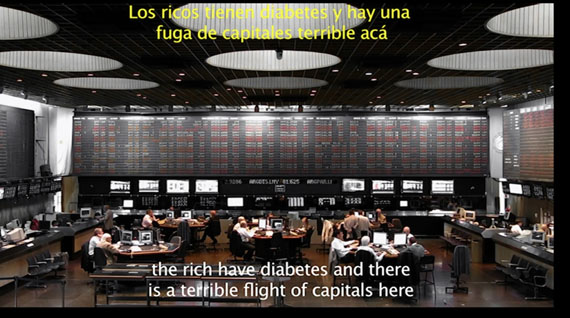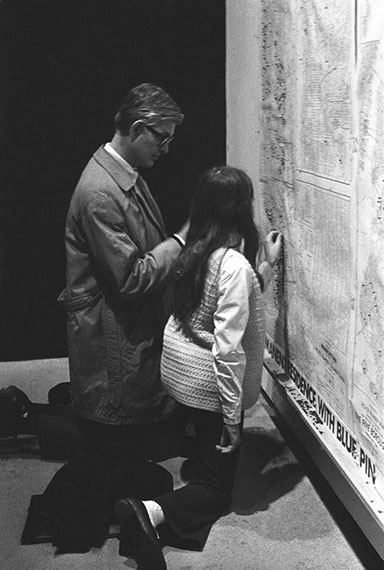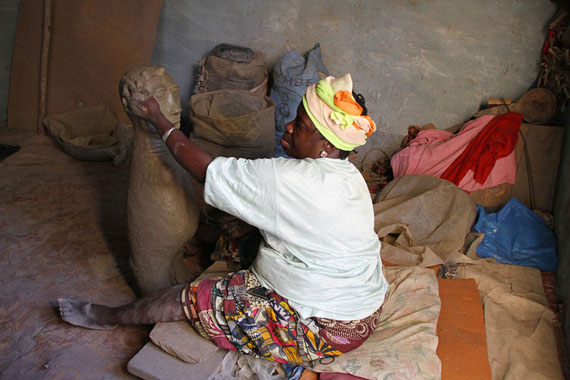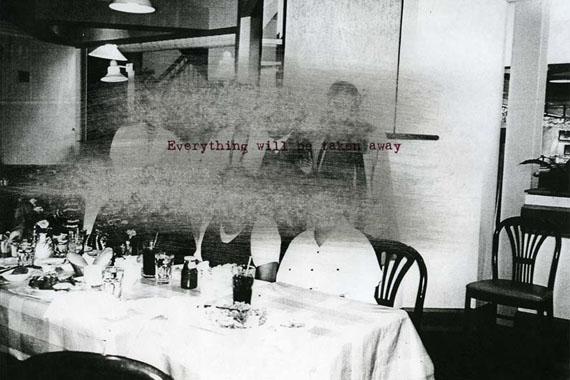
The Venice Biennale - 56th International Art Exhibition
All the World's Futures
Jumana Emil Abboud » Adel Abdessemed » Mathieu Kleyebe Abonnenc » Abounaddara » Boris Achour » Chantal Akerman » John Akomfrah » Kutluğ Ataman » Maja Bajevic » Ernesto Ballesteros » Sammy Baloji » Rosa Barba » Petra Bauer » Walead Beshty » Huma Bhabha » Xu Bing » Christian Boltanski » Monica Bonvicini » Sonia Boyce » Ricardo Brey » Marcel Broodthaers » Tania Bruguera » Teresa Burga » Olga Chernysheva » Tiffany Chung » Jeremy Deller » Thea Djordjadze » Antje Ehmann » Maria Eichhorn » Walker Evans » Harun Farocki » CAO Fei » Peter Friedl » Coco Fusco » Marco Fusinato » Charles Gaines » Ellen Gallagher » Ana Gallardo » Dora García » Theaster Gates » Aikaterini Gegisian » Isa Genzken » Gluklya (Natalia Pershina-Yakimanskaya) » Andreas Gursky » Carsten Höller » Hans Haacke » Kay Hassan » Im Heung-soon » Thomas Hirschhorn » Nancy Holt » Invisible Borders: Trans-African Photographers » Jennifer Allora & Guillermo Calzadilla » Joana Hadjithomas & Khalil Joreige » Jeon Joon-ho » Isaac Julien » Samson Kambalu » Alexander Kluge » Runo Lagomarsino » Glenn Ligon » David Maljkovic » Chris Marker » Kerry James Marshall » Helen Marten » Fabio Mauri » Steve McQueen » Naeem Mohaiemem » Kyungwon Moon » Wangechi Mutu » Hwayeon Nam » Bruce Nauman » Katrina Neiburga » Olaf Nicolai » Philippe Parreno » Adrian Piper » Raqs Media Collective » Lili Reynaud-Dewar » Liisa Roberts » Mika Rottenberg » Hrair Sarkissian » Fatou Kandé Senghor » Gary Simmons » Taryn Simon » Lorna Simpson » Robert Smithson » Mikhael Subotzky » The Propeller Group » Barthélémy Toguo » Lu Yang » QIU Zhijie » & others
Exhibition: 9 May – 22 Nov 2015
Wed 6 May
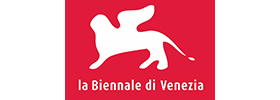
The Venice Biennale
Ca' Giustinian San Marco 1364
30124 Venezia
+39 041-2728397
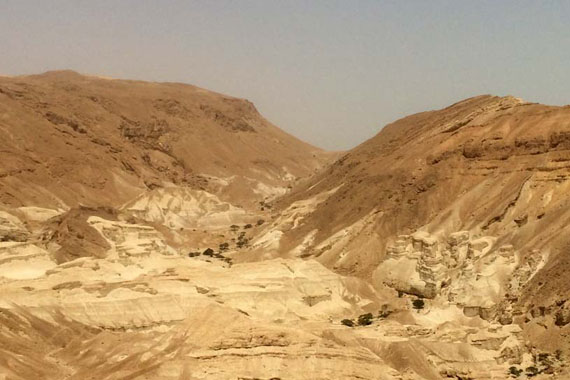
56th International Art Exhibition - All the World’s Futures
Curator: Okwui Enwezor
The show consists of over 136 artists from fifty-three countries, and will feature a space for live programming in the Central Pavilion designed by David Adjaye called The Arena. “The linchpin of this program will be the epic live reading of all three volumes of Karl Marx’s Das Kapital,” Enwezor states. “Here, Das Kapital will serve as a kind of Oratorio that will be continuously read live, throughout the exhibition’s seven months’ duration.”
The 56th International Art Exhibition will form a unitary itinerary that starts at the Central Pavilion (Giardini) and continues at the Arsenale, with over 136 artists from 53 countries, of whom 89 will be showing here for the first time.
After having explained in October the main topics of All the World’s Futures, Okwui Enwezor has explained one movens for his project as follows:
The ARENA
“In 1974 la Biennale di Venezia, following a major institutional restructuring and the revision of its rules and articles of constitution, launched an ambitious and unprecedented four-year plan of events and activities. Part of the programs of 1974 were dedicated to Chile, thus actively foregrounding a gesture of solidarity toward that country in the aftermath of the violent coup d’état, in which General Augusto Pinochet overthrew the government of Salvador Allende in 1973. Bringing practitioners across the fields of visual art, cinema, music, theater, dance, and performance, the events of the 1974 Art Biennale were spread across the entire city of Venice. Today, this remarkable and transformative episode in the history of the Biennale is largely forgotten.”
“The dedication of the program of events to Chile and against fascism remains one of the most explicit attempts, in recent memory, by which an exhibition of the stature of the Art Biennale not only responds to, but courageously steps forward to share the historical stage with the political and social contexts of its time. It goes without saying that, in view of the current turmoil around the world, that the Biennale’s Eventi del 1974 has been a curatorial inspiration.”
“In response to this remarkable episode and the rich documentation it generated, the 56th International Art Exhibition: All the World’s Futures, will introduce the ARENA, an active space dedicated to continuous live programming across disciplines and located within the Central Pavilion in the Giardini. The linchpin of this program will be the epic live reading of all three volumes of Karl Marx’s Das Kapital (Capital). Here, Das Kapital will serve as a kind of Oratorio that will be continuously read live, throughout the exhibition’s seven months’ duration.”
“Designed by award-winning Ghanaian/British architect David Adjaye, the ARENA will serve as a gathering-place of the spoken word, the art of the song, recitals, film projections, and a forum for public discussions. Taking the concept of the Sikh event, the Akhand Path (a recitation of the Sikh holy book read continuously over several days by a relay of readers), Das Kapital will be read as a dramatic text by trained actors, directed by artist and filmmaker Isaac Julien, during the entire duration of this year Art Biennale.”
“Carrying out the concept of “Liveness: On Epic Duration,” the Art Biennale has commissioned several new scores and artists’ performances, to be presented continuously in the ARENA. Here, we are especially interested in the concept of the song and the potential for the human voice to be an instrument that carries forward the pace of a narrative.”
“Olaf Nicolai is developing a new performance work that draws inspiration from Luigi Nono’s two-part composition Un volto, e del mare / Non consumiamo Marx (1968), an innovative piece for voice and magnetic tape, as well as the Italian composer’s later attempts to develop a critical and political statement by means of music, drawing inspiration for his lyrics from Cesare Pavese’s poems, from wall writings seen in the streets of Paris, and even found voices which he randomly recorded live during street demonstrations!
Joana Hadjithomas and Khalil Joreige will present a daily reading of their artist book Latent Images: Diary of a Photographer, the third part of their Wonder Beirut project. In addition to its text, this book includes thirty-eight photographic plates selected from among hundreds of reels of film exposed, but until now never developed, by the Lebanese photographer Abdallah Farah between 1997 and 2006.
Jason Moran’s STAGED will map and investigate the tempos of work songs sung in prisons, fields, and houses. In a sampling of songs that inmates sing while working in the Louisiana State Penitentiary at Angola, the tempos range from 57 to 190 beats per minute.
Jeremy Deller will explore the question of life and working conditions in factories, based on archival materials from the nineteenth century through the present.
Charles Gaines’s new original master composition for the Art Biennale is derived from his most recent body of work, Notes on Social Justice, a series of large-scale drawings of musical scores from songs, some borrowed from as early as the American Civil War (1860–1865) and others dating from the mid twentieth century.
Mathieu Kleyebe Abonnenc will present in the Art Biennale a temporary memorial to the music and personality of the legendary African American musician, singer, and composer Julius Eastman (1940–1990), whose singular and inimitable contribution to contemporary, avant-garde classical music will be on display in the ARENA throughout the Exhibition.
the TOMORROW will focus their attention on Das Kapital, not just as an abstract field of logical and economical devices, but rather as a potential repository of stories and figures. In the Art Biennale, the TOMORROW will attempt to imagine the characters and the figures that could make use of Marx’s toolbox in the contemporary context. Tales on Das Kapital is a search for non-modern subjects to play the Capital Drama. The TOMORROW will offer weekend seminars, during which the focus will turn to the narrative and epic dimension of Marx’s book.”
“The focus on live performances and actions will extend in the Central Pavilion beyond the ARENA and into the Biblioteca della Biennale, where Mounira Al Solh’s NOA (Not Only Arabic), a limited-edition periodical founded in 2008, will be made available for solo viewings that must be arranged by appointment. During the preview (May 6–8), also at the Biblioteca, Lili Reynaud-Dewar and her students will read a selection of texts from the mid 1990s to today—analysis, testimonies, manifestos—dealing with notions of intimacy, vulnerability, and promiscuity in the context of the AIDS epidemic.”
“Connecting the 56th Art Biennale’s two main venues, the Giardini and the Arsenale, Saâdane Afif’s performance piece The Laguna’s Tribute: A Corner Speaker in Venice will be staged at the corner of Via Garibaldi and the Grand Canal. Spectators there will see and hear a local Corner Speaker either read a text or sing the lyrics of songs composed by friends of the artist.”
“A number of performance works will also be presented in the Arsenale, beginning with a new project by Jennifer Allora and Guillermo Calzadilla, In the Midst of Things, in which a choral group will perform an arrangement of Joseph Haydn’s oratorio The Creation.”
“In the Corderie, Theaster Gates will activate his new multimedia installation Martyr Construction, a work addressing the question of the recurring dissolution and demolition of church parishes in African American and Hispanic neighborhoods across the United States.”
SPECIAL PRESENTATIONS
“While the central focus of All the World’s Futures is on an extensive body of new works commissioned from artists specifically for the 56th Art Biennale—an unprecedented range of projects exhibited for the first time—the Exhibition will also pay close attention to a selected iteration of historical perspectives by artists both living and deceased. Organized as small anthologies, these compact surveys range from a series of text-based neon sculptures by Bruce Nauman, dating from 1972 to the early 1980s, to an atlas of Harun Farocki’s filmography, which totals 87 films. In addition, the Art Biennale will present works by such seminal figures as the photographer Walker Evans, with a complete set of the original edition of Let Us Now Praise Famous Men; from filmmaker Sergei Eisenstein to multimedia artist Chris Marker; installation artist Isa Genzken to sculptor-composer Terry Adkins; author-film director Alexander Kluge to installation artist Hans Haacke; conceptual artist Teresa Burga to performance artist Fabio Mauri; sculptor Melvin Edwards to painter Marlene Dumas; artist-activist Inji Efflatoun to earthworks artist Robert Smithson, painter Emily Kngwarreye to film director Ousmane Sembène; sculptor Ricardo Brey to conceptual artist Adrian Piper; painters Tetsuya Ishida to Georg Baselitz.”
“This gathering of practices from Africa, Asia, Australia, Europe, and North and South America searches for new connections in the artists’ commitment to examining the human condition, or exploring specific ideas and areas of production within the artists’ oeuvre.”
“The Invisible Borders Trans-African Project, for example, is an artist-led organization founded in Nigeria in 2009 that assembles African artists –mainly photographers, writers, and filmmakers- with the zeal and passion for social change, to reflect upon with the question of borders and its implications in 21st century Africa. The Invisible Borders will present in the 56th Art Biennale a Trans-African Worldspace, a survey of their platform’s recent and ongoing photographic and audiovisual production, which will be periodically generated and incorporated into their presentation throughout the seven months of the exhibition. Moreover, the group will present in the ARENA their feature length documentary Invisible Borders 2011, The Film, followed by a discussion on the State of Things in the trans-African contemporary art scene and the critical ideas at the center of their practice.
Abounaddara is an anonymous collective of Syrian filmmakers working on impromptu documentaries, otherwise known as “emergency cinema.” Abounaddara has long reflected on the right to the image. They employ an aesthetic of do-it-yourself and disorientation, self-producing their films and distributing them online to avoid political censorship and the formatting dictates of the media and entertainment industries. Since its founding in 2010, Abounaddara has released a series of short documentaries celebrating the daily life of ordinary Syrians. In the wake of the March 2011 popular uprising, they began to produce a short film every Friday, an ongoing initiative that relies on the voluntary commitment of a network of filmmakers who work in secret, for reasons of security. At the Art Biennale Abounaddara will present a video installation featuring a selection of films from their prolific body of work, and will premiere a new film every Friday in the ARENA.“
Biennale Sessions, a project for universities
The Biennale Sessions project will be held for the sixth consecutive year, following the success of its previous editions. This initiative is dedicated by la Biennale di Venezia to universities and academies of fine arts, and to institutions that develop research and training in the arts and in related fields. The goal is to offer favourable conditions for students and teachers to organize three-day group visits for fifty people or more, offering reduced price meals, assistance in organizing their journey and stay, and the possibility to organize seminars at the Exhibition’s venues free of charge.�
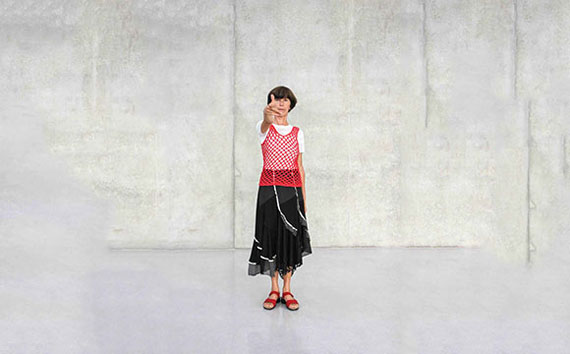
The President of la Biennale di Venezia, Paolo Baratta, accompanied by the curator of the 56th International Art Exhibition, Okwui Enwezor, met at Ca’ Giustinian with the representatives of the 53 Countries participating in the 56th Exhibition, which will take place from May 9th – November 22nd 2015 at the Giardini and at the Arsenale (Preview on May 6th, 7th and 8th) and in various other venues in Venice.
The title chosen by Okwui Enwezor for the 56th International Art Exhibition is:
All the World’s Futures
Okwui Enwezor has explained his project as follows:
« The ruptures that surround and abound around every corner of the global landscape today recall the evanescent debris of previous catastrophes piled at the feet of the angel of history in Angelus Novus. How can the current disquiet of our time be properly grasped, made comprehensible, examined, and articulated? Over the course of the last two centuries the radical changes have made new and fascinating ideas subject matter for artists, writers, filmmakers, performers, composers, musicians. It is with this recognition that the 56th International Exhibition of la Biennale di Venezia proposes All the World’s Futures a project devoted to a fresh appraisal of the relationship of art and artists to the current state of things ».
The Exhibition: Parliament of Forms
« Rather than one overarching theme, All the World’s Futures is informed by a layer of intersecting Filters, these Filters are a constellation of parameters that circumscribe multiple ideas, which will be touched upon to both imagine and realize a diversity of practices. The 56th International Art Exhibition will employ as a Filter the historical trajectory that the Biennale itself, over the course of its one hundred and twenty years existence has run over, a Filter through which to reflect on both the current “state of things” and the “appearance of things ».
« How can artists, thinkers, writers, composers, choreographers, singers, and musicians, through images, objects, words, movement, actions, lyrics, sound bring together publics in acts of looking, listening, responding, engaging, speaking in order to make sense of the current upheaval? What material, symbolic or aesthetic, political or social acts will be produced in this dialectical field of references to give shape to an exhibition which refuses confinement within the boundaries of conventional display models? In All the World’s Futures the curator himself, along with artists, activists, the public, and contributors of all kinds will appear as the central protagonists in the open orchestration of the project ».
«At the core of the Exhibition is the notion of the exhibition as stage where historical and counter-historical projects will be explored. Within this framework the main aspects of the 56th Exhibition will solicit and privilege new proposals and works conceived specifically by invited artists, filmmakers, choreographers, performers, composers, and writers to work either individually or in collaboration ».
Three are the Filters that form All the World’s Futures:
Liveness: On epic duration | Garden of Disorder | Capital: A Live Reading.
Liveness: On epic duration
« All the World’s Futures is both a spatial and temporal manifestation that is relentlessly incomplete, structured by a logic of unfolding, a program of events that can be experienced at the intersection of liveness and display. It will be a dramatization of the space of the exhibition as a continuous, unfolding, and unceasing live event. In doing so All the World’s Futures will activate works that are already existing but also invites contributions that will be realized especially for this Exhibition ».
Garden of Disorder
«This Filter, located in the Giardini and the Central Pavilion, Corderie, Giardino delle Vergini in the Arsenale, and selected areas in Venice, takes the historical ground of la Biennale in the Giardini as a metaphor through which to explore the current “state of things ”. The Biennale Arte 2015, returns to the ancient ground of this ideal to explore the changes in the global environment, to read the Giardini with its ramshackle assemblage of pavilions as the ultimate site of a disordered world, of national conflicts, as well as territorial and geopolitical disfigurations. The artists have been invited to develop proposals that take the concept of the garden as a point of departure to realized new sculptures, films, performances, and installations for All the World’s Futures ».
Capital: A Live Reading
«Beyond the distemper and disorder in the current “state of things,” there is one pervasive preoccupation that has been at the heart of our time and modernity. Since the publication of Karl Marx’s massive Capital: Critique of Political Economy in 1867, the structure and nature of capital has captivated thinkers and artists, as well as inspired political theorists, economists, and ideological structures across the world. A core part of this program of live readings, is “Das Kapital” a massive meticulously researched bibliographic project, conceived by the artistic director in the Central Pavilion».
« With this outlook, All the World’s Futures, through its constellation of Filters will delve into the “state of things” and question “the appearance of things”, shifting from the guttural enunciation of the voice to the visual and physical manifestations between artworks and the public ».
« The first International Art Exhibition of the reformed Biennale di Venezia took place in 1999 and it was in that year, at the very beginning of a new chapter in its history, that it found itself having to respond to the many adverse comments it received. Many thought that an exhibition through pavilions was obsolete or at the very least an outdated concept in what was the much heralded era of globalization ».
So the President Paolo Baratta has introduced the 56th International Art Exhibition remembering to accepted the criticisms, but not the solutions that some put forward: « we did not throw out the use of pavilions for the Biennale - explains the President – but we enhanced it in a definitive way, by arranging a large, stand-alone International Exhibition at the same time . We arranged additional large spaces and appointed a curator for this ambitious project of ours. A main International Exhibition replaced the international sections, which used to be added to the exhibition organized by the curator of the Italian Pavilion. An international curator for our International Exhibition and no more committees or commissions. The new model worked, and this dynamic, new two-pronged event led to an increase in the number of countries wanting to participate.
It’s been 15 years since that reform, and the start of this new chapter, and it is thanks to that calculated choice that today, a curator of the ilk of Okwui Enwezor – like his most recent predecessors – can present not just a ‘section’, but an entire International Exhibition inspired by the ambition to offer the world a global sounding board ».
« In that occasion – Baratta continues – the Arsenale became an addition to the Giardini venue, and 15 years on, the number of participating countries, exhibiting in the two venues, is equal: 28 national participations at the Giardini and the same at the Arsenale, on the occasion of the 14th International Architecture Exhibition. Since the Biennale took on this greater and more precise responsibility, the dialogue with the pavilions and participating countries has evolved. The pluralism of voices that now exists is unique to the Biennale di Venezia ».
« The Biennale – specifies Baratta – is an Art Exhibition and not an art fair, and as such requires more than an unbiased up-dating of a roster of artists, young or not so young, famous or otherwise. Art and today’s reality present us with far more complex tasks. In the past, we have defined the Biennale in various ways. Today, faced with the dangers of slipping towards a more orthodox popularity, conventionality and security, we have named it “The Machine of Desire” to keep the desire for art high and in turn to want art and accept it is a necessity. In other words, to recognise as both a primary and primordial necessity man’s need to give some perceptible form to utopias, obsessions, anxieties, desires and to the ultra-sensitive world ».
« A Biennale is a complex affair– states Baratta. None of the aspects mentioned can be overlooked and whatever the curator’s initial concept – philosophical, political or anthropological – his selection really must include pieces that are necessary and fundamental to our perception. The introduction of the Biennale College is proof of our increasing commitment to new generations of artists. The current Architecture Exhibition has enjoyed the addition of the Dance, Theatre, Music and Cinema sectors. The next Art Biennale contain various forms of art but as an integral part of the exhibition ».
Baratta concludes: « It is not the first time that an exhibition faces a world filled with uncertainty and turmoil whilst the “garden of the world” appears to us as a “garden of disorder”, and it is also not the first time that faced with a complicated reality, an exhibition responds with the enthusiasm and dynamism evident in the one we are in the throes of organizing ».
The 56th International Art Exhibition of la Biennale di Venezia will also present, as is traditional, the National Participations with their own exhibitions in the Pavilions at the Giardini and at the Arsenale, and in the historic city centre of Venice.
This edition will also include selected Collateral Events, presented by international entities and institutions, which will present their exhibitions and initiatives in Venice concurrently with the 56th Exhibition.
Official website: www.labiennale.org
Official hashtag: #biennalearte2015�
